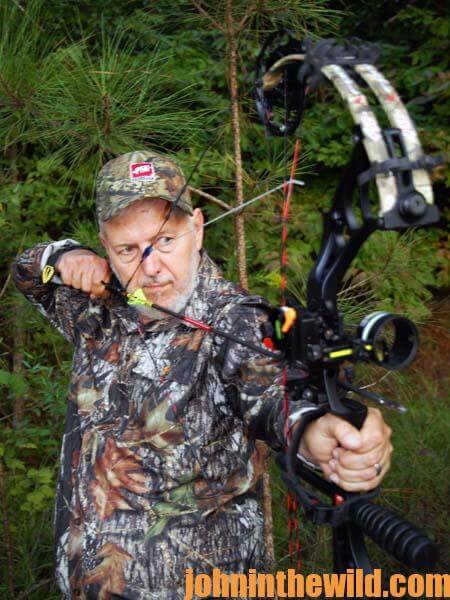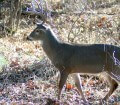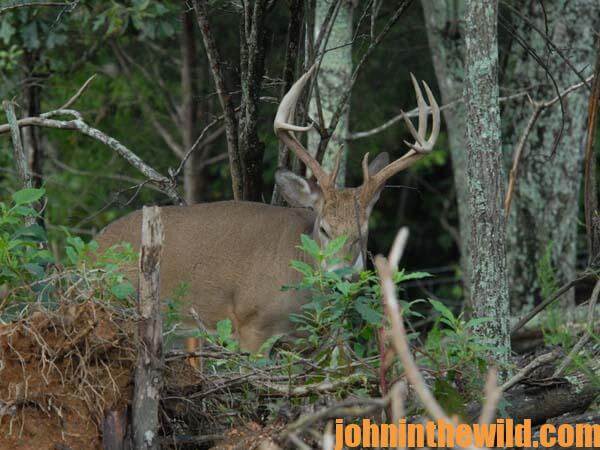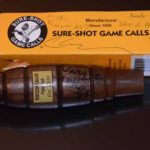John’s Note: Sometimes, a buck will see you or hear you – and you’ll still get a shot. But if he smells you – he’ll be gone.
 Wind is one form of air movement and is generally directional to points on the compass. “But thermals,” Sheppard explains, “are usually air movements upward or downward. Thermals in the mountains are well known to those who hunt mountainous regions. However, outdoorsmen who hunt in more-flat terrains don’t give much thought to the effects of thermals. If you are hunting on the side of a mountain that is 2 miles from the bottom to the top, then most hunters realize that they want to be hunting the top side of the mountain in the morning, when the thermals are causing the air at the bottom of the mountain to rise to the top. Too, they want to be hunting at the bottom of the mountain in the afternoons when the thermals cause the air at the tops of the mountains to drift to the bottom. The general upward drift of air in the morning will take the hunter’s scent up and away from the deer, and the general downward movement of the air in the afternoon will keep the hunter’s scent close to the ground and away from the deer in the late evening.
Wind is one form of air movement and is generally directional to points on the compass. “But thermals,” Sheppard explains, “are usually air movements upward or downward. Thermals in the mountains are well known to those who hunt mountainous regions. However, outdoorsmen who hunt in more-flat terrains don’t give much thought to the effects of thermals. If you are hunting on the side of a mountain that is 2 miles from the bottom to the top, then most hunters realize that they want to be hunting the top side of the mountain in the morning, when the thermals are causing the air at the bottom of the mountain to rise to the top. Too, they want to be hunting at the bottom of the mountain in the afternoons when the thermals cause the air at the tops of the mountains to drift to the bottom. The general upward drift of air in the morning will take the hunter’s scent up and away from the deer, and the general downward movement of the air in the afternoon will keep the hunter’s scent close to the ground and away from the deer in the late evening.
“The flatland hunter has to deal with thermals too, just like the mountain hunter does, but the thermals aren’t as obvious. The air still generally rises in the morning and falls in the evening. One of the worst situations to try and take a deer because of the thermals is for a hunter to go to his stand early in the evening and have no wind. Under these conditions, the hunter’s scent will be forced straight down the tree and spread out in all directions. For a deer to come within shooting range and not smell a hunter under these conditions is almost impossible, especially if you’re bowhunting.
“Another condition that is almost death for the hunter in search of a buck is to be in a tree stand late in the afternoon during a rain with no wind when the fog begins to be pushed close to the ground. The hunter should know then that his scent is also hugging close to the ground. The same situation prevails in any type of rainy weather that lasts all day with no wind. During those times, the best thing to do is either scout, try and stalk a deer or go home. I have found that the best tactics to hunt during no-wind situations is to not go to your stand until 30 minutes before dark. You want to spend as little time as possible in that stand under these conditions, because the longer you sit in the stand, the more time you give your scent to spread all over the area.
 “A hunter also can use thermals to his advantage, if there’s a very-slight wind of 5 miles an hour or less. If you are hunting in the morning, you often can hunt from a stand with the wind at your back. With a slow wind and a rising thermal, your scent will be carried upwards above the deer. Then you can hunt out of a stand where the wind is blowing in the wrong direction. I’ve proved this point to myself before. I was in my tree stand early one morning and spotted an 8-point buck that would score about 110 or 120 on Pope & Young. I already could visualize him mounted on my den wall. But since he was coming from downwind of me, I felt sure he would pick up my scent. However, the weather conditions were right. The time was early morning, and due to the very, very slight breeze, my scent was rising. I watched the big buck come under my scent. Right at the point he should have winded me – he didn’t. And he could have continued to move into the zone where there was no doubt that he would have winded me, except for the rising thermal and the slight wind carrying my scent over his head. The buck came on in my direction right under my scent. At 20 yards, I drew and released the arrow. However, I just flat out missed, and the deer went on his way.”
“A hunter also can use thermals to his advantage, if there’s a very-slight wind of 5 miles an hour or less. If you are hunting in the morning, you often can hunt from a stand with the wind at your back. With a slow wind and a rising thermal, your scent will be carried upwards above the deer. Then you can hunt out of a stand where the wind is blowing in the wrong direction. I’ve proved this point to myself before. I was in my tree stand early one morning and spotted an 8-point buck that would score about 110 or 120 on Pope & Young. I already could visualize him mounted on my den wall. But since he was coming from downwind of me, I felt sure he would pick up my scent. However, the weather conditions were right. The time was early morning, and due to the very, very slight breeze, my scent was rising. I watched the big buck come under my scent. Right at the point he should have winded me – he didn’t. And he could have continued to move into the zone where there was no doubt that he would have winded me, except for the rising thermal and the slight wind carrying my scent over his head. The buck came on in my direction right under my scent. At 20 yards, I drew and released the arrow. However, I just flat out missed, and the deer went on his way.”
Therefore, if you understand thermals, you often can hunt with the wind direction that normally will carry your scent to the deer. To know what’s happening with thermals when you’re in a tree stand, there are several products you can use, but Sheppard prefers a string on his broadhead. According to Sheppard, “In the morning, thermals will cause the string to lift up and settle back down. In the late evening, the string will hang straight down if there is no wind. To test this theory, light a cigarette in late afternoon with no wind, and watch the smoke settle to the ground. In early morning, you can watch cigarette smoke with no wind rise. The way the cigarette smoke goes is the same way your scent travels.”
 As a cardiologist, Dr. Sheppard is totally opposed to cigarette smoking. However, as a deer hunter, Sheppard believes, “Cigarette smokers have no disadvantage when bowhunting for deer. If the deer can smell cigarette smoke coming from a stand, he already will have picked up human odor. The only disadvantage to a smoker on a tree stand is the movement required to lift the cigarette, cigar or pipe to the mouth and put it back down. As long as you watch and make sure that a deer doesn’t see you move, you can use that cigarette smoke to let you know what the air currents are doing. I’ve often considered taking a cigarette with me to the stand, so that I could watch the air currents. However, I believe the string on the arrow works just as effectively, and besides I don’t smoke.”
As a cardiologist, Dr. Sheppard is totally opposed to cigarette smoking. However, as a deer hunter, Sheppard believes, “Cigarette smokers have no disadvantage when bowhunting for deer. If the deer can smell cigarette smoke coming from a stand, he already will have picked up human odor. The only disadvantage to a smoker on a tree stand is the movement required to lift the cigarette, cigar or pipe to the mouth and put it back down. As long as you watch and make sure that a deer doesn’t see you move, you can use that cigarette smoke to let you know what the air currents are doing. I’ve often considered taking a cigarette with me to the stand, so that I could watch the air currents. However, I believe the string on the arrow works just as effectively, and besides I don’t smoke.”
To get John E. Phillips’ eBooks and print books on hunting deer, “How to Hunt and Take Big Buck Deer on Small Properties,” “How to Hunt Deer Up Close: With Bows, Rifles, Muzzleloaders and Crossbows,” “PhD Whitetails: How to Hunt and Take the Smartest Deer on Any Property,” “How to Take Monster Bucks,” “How to Hunt Deer Like a Pro,” and “Bowhunting Deer: Mossy Oak Pros Know Bucks and Bows,” or to prepare venison, “Deer & Fixings,” click here.
For information on making jerky from your deer to provide a protein-rich snack, you can download a free book from https://johninthewild.com/free-books.










